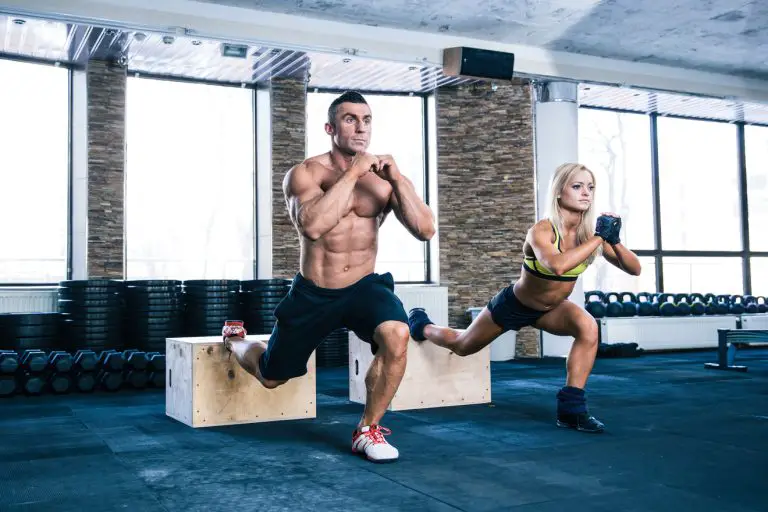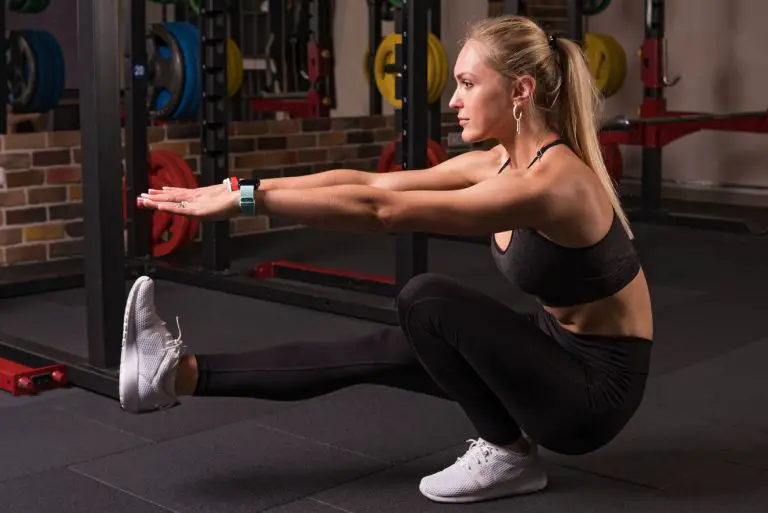How to train around knee pain and keep making progress
Key Takeaways
- Poor form, inadequate warm-ups, and muscular imbalances are common but fixable causes of knee pain in gym-goers.
- Strengthening the glutes, hamstrings, and hip stabilizers can significantly reduce stress on the knees.
- Modifying squat depth, stance width, and exercise selection helps lifters train hard while avoiding joint aggravation.
- Effective warm-ups should include dynamic mobility, joint activation, and progressive loading—not just light cardio.
- Lifters with persistent or serious knee pain should consider seeing a medical professional to rule out structural damage.
Knee pain can potentially indicate a serious issue, especially if it’s sharp or severe. In this case, it’s very important to stop training and seek medical advice as soon as possible.
On the other hand, knee pain can sometimes be mild and not merit, at least in your mind, a visit to the doctor, especially if it comes and goes. In this case, although there may not be a serious problem, it can quietly kill your motivation in the gym. Whether it creeps in during squats, nags you during cardio, or lingers after leg day, it’s a common obstacle that can derail consistency and progress for lifters of all levels.
But the good news is this: a great deal of gym-related knee pain isn’t caused by structural damage and isn’t serious. It’s often the result of poor technique, muscular imbalances, or training errors—all of which are potentially fixable.
In this post, we’ll walk through the most effective ways to manage and train around this kind of knee pain without losing progress. Whether you’re recovering from old injuries, experiencing flare-ups, or just want to bulletproof your knees, this post gives you the strategies, context, and training adjustments that can help.
However, as already stressed, please do seek medical advice if the pain is persistent or severe.
Why Knee Pain Happens in the Gym
The knee is a hinge joint that transfers force between the hip and ankle. When that force isn’t managed properly—due to bad form, tightness, or muscular imbalances—your knees take the hit.
Common contributors to gym-related knee pain:
- Quad dominance: Weak glutes and hamstrings force your quads to do most of the work, placing stress on the patellar tendon.
- Poor ankle mobility: When your ankles can’t dorsiflex properly (bend upward), your knees are forced to travel too far forward in squats or lunges, increasing shear forces.
- Tight hips: Stiff hip flexors or weak abductors limit proper alignment and stability.
- Improper form: Knee valgus (inward collapse), forward knee travel, and rounded backs during squats or leg presses all overload the joint.
The good news? You don’t need perfect biomechanics to train pain-free. You just need to identify your movement limitations, modify your lifts accordingly, and work on mobility and strength in the right areas.
Step 1: Master Pre-Training Knee Prep
A smart warm-up can dramatically reduce joint strain and activate the right muscles before lifting. Most lifters skip this or just “do a few bodyweight squats,” but proper knee prep makes a huge difference.
Try this pre-leg-day activation sequence:
- Foam roll quads, IT band, and glutes – 30 seconds each
- 90/90 hip rotations – 8 per side for hip mobility
- Wall ankle dorsiflexion drills – 10 reps per foot
- Glute bridges or banded lateral walks – 2 sets of 15
- Bodyweight tempo squats (3 seconds down) – 2 sets of 10
This routine primes the hips, knees, and ankles for safer lifting by restoring range of motion and switching on stabilizer muscles that protect your knees.
Step 2: Modify Your Lifts Without Losing Gains
If a specific movement causes pain, don’t power through it. Modify the angle, load, or range of motion to reduce knee stress while still training the same muscles.
Try these joint-friendly swaps:
- Back squat > Box squat (limits depth and forward knee travel)
- Walking lunge > Reverse lunge or split squat (less shear force)
- Leg extension > Terminal knee extensions (TKEs) (more joint control, less load)
- Leg press > Feet higher on platform (reduces knee torque)
Using tempo (e.g. 3-0-1) and isometrics is another smart way to build strength with lighter loads, giving joints a break while maintaining tension and hypertrophy stimulus.
Step 3: Improve Technique on Core Lower Body Lifts
Often, pain stems from subtle form breakdowns that go unnoticed. A few cues can make a world of difference in reducing stress on the knees:
For squats:
- Push your knees out—not forward—through the movement
- Drive up through your midfoot (not your toes)
- Keep your spine neutral and chest up
- Brace your core and squeeze your glutes at the top
For lunges:
- Keep your torso slightly forward, not vertical
- Step back (not forward) to reduce impact
- Keep your front shin vertical, with knee stacked over ankle
For deadlifts:
- Start with hips back, not down like a squat
- Keep bar close to shins and pull with hamstrings and glutes
- Avoid jerking the weight off the floor
Even a small fix—like adjusting foot angle or stance width—can relieve discomfort instantly if it aligns better with your anatomy.
Step 4: Know When to Seek Medical Support
If you’ve modified your training, worked on mobility, and still experience persistent knee pain that limits performance or daily life, it may be time to explore medical options. In this case, do visit your physician for medical advice and explore the potential treatment options.
One emerging treatment for chronic knee pain—especially in cases of osteoarthritis or joint inflammation—is genicular artery embolization (GAE). This minimally invasive procedure reduces inflammation by blocking specific arteries that supply the inflamed knee joint. While it doesn’t reverse cartilage damage and further studies are required, early trials suggest it reduces pain and improves function in patients who aren’t ready or willing to undergo total knee replacement. If knee pain is disrupting your training life and other options have failed, it’s worth discussing with an interventional radiologist familiar with the procedure.
Step 5: Strengthen What Supports the Knee
Knees often get blamed for what’s really a hip or ankle problem. Strengthening the muscles that support knee alignment goes a long way in keeping them healthy.
Key muscles to strengthen:
- Glute medius and minimus (lateral stability)
- Hamstrings (posterior chain balance)
- Adductors (control knee tracking)
- Calves (ankle stability and deceleration)
Incorporate single-leg exercises like Bulgarian split squats, step-ups, and single-leg RDLs to build balance and resilience. These train the knee to stabilize under real-world conditions, not just heavy barbell lifts.
Final Word: Train Smarter, Not Just Harder
Knee pain doesn’t mean you need to stop training—it means you need to start training smarter. With the right mobility work, strategic modifications, and careful attention to technique, you can keep making lower body gains while reducing stress on your joints.
And if you’re dealing with persistent pain that’s resistant to all these changes, emerging treatments like genicular artery embolization could offer relief and help you stay active long-term.
Your knees are built to move, absorb force, and support progress. Treat them right, and they’ll return the favor for years to come.







